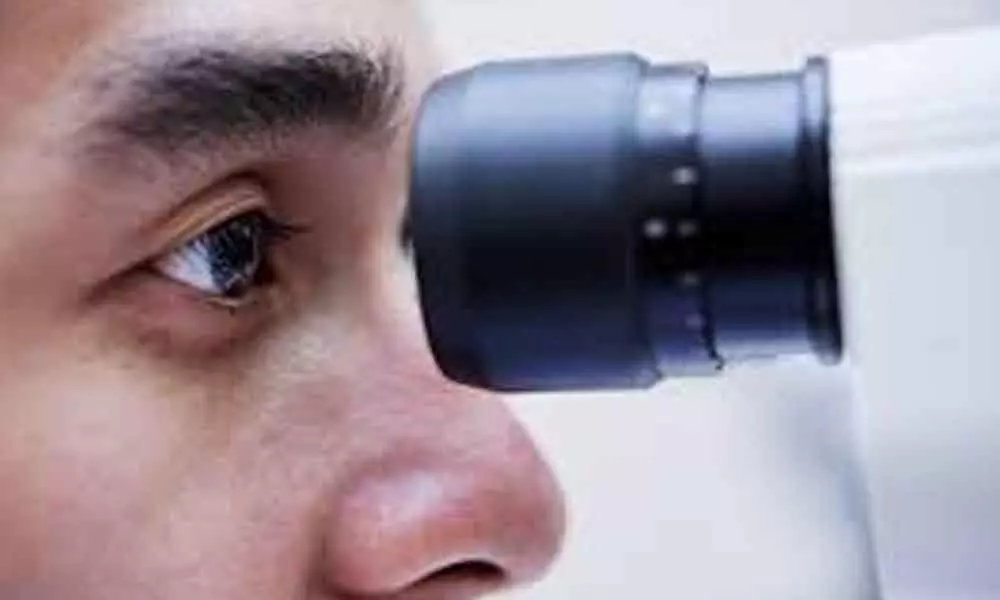Live
- Holi Festival: Liquor Outlets to Remain Closed for Holi in Hyderabad
- iQoo launches Neo 10R model
- Hyderabad: Woman Alleges Caste-Based Harassment by Roommates in Shaikpet
- Markets end on flat note
- Nifty Metal index falls after US tariffs
- AP minister clarifies on TIDCO houses, says all the issues will be addressed
- Uppal Stadium Preps for IPL with Rs 5 Crore Renovation
- Sebi speeds up rights issue process
- Ladhani Group to invest Rs 11K cr over 5 yrs
- Moody’s forecasts higher GDP growth in FY26

Studies reveal that gene therapy effective for treating wet age-related macular degeneration.
Washington: Recently developed gene therapy seems to be a promising alternative for treating one of the most common causes of blindness, wet age-related macular degeneration (AMD), claims a study.
Data presented at the 123rd Annual Meeting of the American Academy of Ophthalmology showed that six patients with wet age-related macular degeneration (AMD) went at least six months without the need for continued injections to control a disease that typically requires treatment every four to six weeks.
Researchers said the hope is that gene therapy will free patients from nearly monthly eye injections by offering a potential "one-and-done" treatment. It's not just about convenience; a more consistent treatment may also help people keep more of their vision.
"This is potentially paradigm-shifting," said lead researcher, Szilard Kiss, M.D., director of Clinical Research and chief of the Retina Service in the Department of Ophthalmology at Weill Cornell Medical College in New York City.
"It's the next evolutionary leap in treating AMD. When you think about what science fiction is and what science reality is; gene therapy for AMD is becoming a clinical reality," added Dr Kiss. AMD is a degenerative eye disease that happens when part of the retina is damaged. The damage happens when new, weak blood vessels form behind the retina at the back of the eye. These abnormal vessels leak, causing scarring and killing off the cells that allow us to see.
One main reason why is that patients are undertreated. This is because most people with AMD must go to the ophthalmologist's office every four to eight weeks for an injection directly into their eye (oftentimes in both eyes).
This can be a difficult schedule to maintain for many elderly patients struggling with other maladies and reliant on others to get them to their ophthalmologist visits. It's also unsustainable for the health care system. Last year alone, ophthalmologists performed more than 8 million anti-VEGF injections in the United States.
Researchers have been searching for a better alternative to monthly injections almost from the moment anti-VEGFs were introduced. Gene therapy is emerging as one of the more promising alternatives to long-term anti-VEGF treatment.
The goal of Dr Kiss' research is to develop a gene therapy that allows the eye to make its own anti-VEGF medicine. The ideal gene therapy would be administered not through a surgical procedure in an operating room, but through an injection into the eye that can be done in the doctor's office, just like routine anti-VEGF treatment is done today.
To do this, Dr Kiss and colleagues have developed a next-generation vector that can insert into the cells of the eye, the genetic material that makes a molecule similar to a widely used anti-VEGF medicine called aflibercept. Once inside the cells, the DNA sequence begins making the aflibercept protein.

© 2025 Hyderabad Media House Limited/The Hans India. All rights reserved. Powered by hocalwire.com







